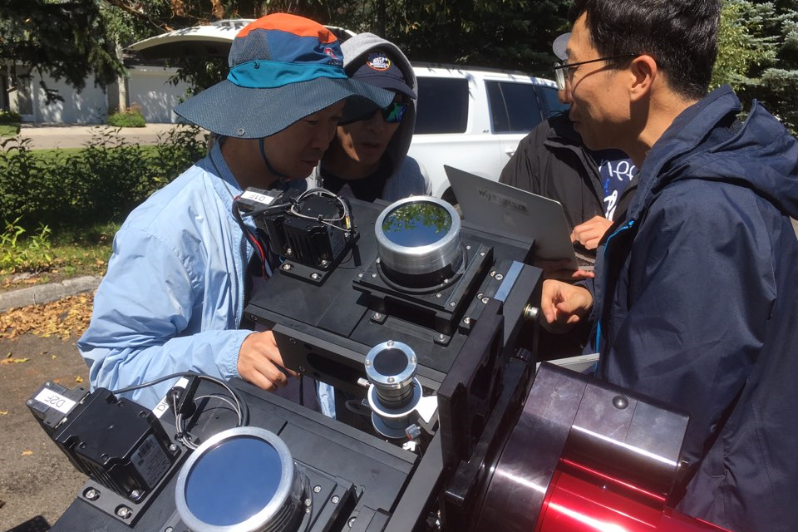The total solar eclipse (TSE) of August 21, 2017 was visible across the entire United States continuously. We observed the eclipse at a site (located at 43.5599 N, 110.6246 W) near Jackson Hole, Wyoming, where we anticipated good weather. The eclipse began to darken the observation site as the partial eclipse progressed from 16:16:57 UT. The total eclipse began on 17:35:08 UT and lasted 140 seconds. The maximum eclipse occurred at 17:36:18 UT at a solar position of 50.5 degree in altitude and 135.1 degree in azimuth. The eclipse ended at 19:00:42 UT. The observation started about two hours before the total eclipse after aligning the optical system and commissioning the electronics and mechanics of the observation system. Observation modes were dark imaging, partial eclipse pinhole imaging, and total eclipse imaging. The dark images were acquired for image preprocessing by shielding the front open aperture of the DICE from light using a pinhole cover and a dark pouch over the front baffle. One full set of dark images comprises 10 images for each of 13 levels of exposure time from 0 to 5 seconds, meaning 130 images in total. The pinhole observation was done with a 200 μm pinhole in front of the aperture. The pinhole image is necessary to obtain the brightness of the Sun and the atmospheric transmission of each filter. A total of 120 images was acquired for a full set of 10 cycles of 12 images each, for four bandpass filters and three polarizer angles. One set was taken every 10 minutes during the partial eclipse phases. The exposure times for the TSE were determined by using a pinhole observation obtained one day before the eclipse. We first determined exposure times for pinhole observations of the solar disk. We then estimated the exposure times for the TSE by assuming a disk-to-corona brightness ratio of 10^6 and scaling with the pinhole-to-full-aperture ratio. We eventually verified the exposure times during the partial eclipse observations. Exposure times for each filter (393.4, 402.5, 399.0, and 424.9 nm) are 192, 236, 288, and 69 milliseconds, respectively. For total eclipse imaging, we take images for 5 seconds at each polarization and filter position, change the polarization, and then filter position, so that one set takes about 1 min. A total of 162 images were acquired over 136 seconds during the TSE from one DICE system. Unfortunately, we failed to obtain data from the CCD camera of the second unit due to a frame transfer error. We took flat field images before and after the TSE by covering the aperture with white cloth as diffuser.

@2x.png)

@2x.png)
@2x.png)
.jpg)
.jpg)
.jpg)

.jpg)
.jpg)
.jpg)
.jpg)
.jpg)
.jpg)
.jpg)

